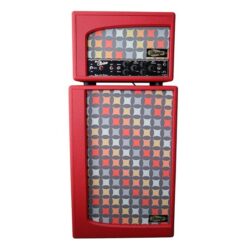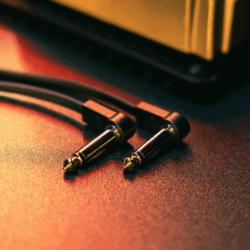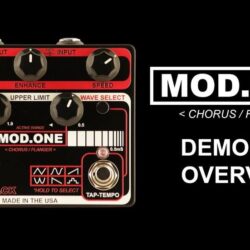
Tame Impala Releases New Single “Loser”
Today, Tame Impala (Kevin Parker) unveils “Loser,” the second song of this new era. LISTEN HERE. The track continues Parker’s fearless exploration of rhythm, texture, and sonic experimentation, building on the meticulous studio approach that has defined his career. The single is accompanied by a music video directed by KRISTOFSKI, and starring actor/musician Joe Keery (Stranger Things, Fargo). Watch the clip HERE:Prior to today’s release, Parker gave fans a taste of what’s to come with the release of his sprawling, drum-beat heavy “End of Summer.” It drew listeners back to the acid house summer of ’89, free parties of the mid-90s, and Australia’s bush doofs in outback paddocks. “Loser” continues Parker’s journey into new sonic territory, layering hypnotic rhythms and textures that push Tame Impala’s sound ever forward. Drawing from a rich history of dance music, his work transforms the imagined past into a sound that feels both present and eternal, reaffirming Tame Impala as one of modern music’s most visionary acts.Kevin Parker has emerged as one of the most influential voices of the last decade. A singular artist renowned for carving out a distinct sound all of his own, Parker crafts transcendent genre-bending sonic landscapes playing every instrument and acting as writer, producer, mixer and engineer on his projects. He has been nominated for four GRAMMY awards with one win for his collaboration with Justice on 2024’s “Neverender.” In his home country of Australia, he’s racked up an impressive 13 ARIA Awards and 27 Nominations. He’s won the BRIT Award for Best International Band and scored nominations for two Billboard Music Awards and an American Music Award. Tame Impala has had numerous US Alternative Radio Top 10 songs including two #1’s for “Lost In Yesterday” and “Is It True.” Tame Impala’s “The Less I Know The Better” is part of the Billionaires Club with over 2 billion streams and the project has racked up numerous gold and platinum certifications globally. Tame Impala has headlined festivals and arenas around the world and released four full length albums – InnerSpeaker, Lonerism, Currents and his most recent album The Slow Rush. The Slow Rush landed at #1 in multiple territories and was his highest charting album to date in both the US and UK, with 14 top 10 chart positions around the world. As a writer and producer Parker has collaborated with Dua Lipa, The Weeknd, SZA, Lady Gaga, Travis Scott, Mark Ronson, Gorillaz, Thundercat, Kali Uchis, 070 Shake, Rhianna, Miguel, A$AP Rocky and many more.
Read more »Psychotic Waltz – A Social Grace
Psychotic Waltz’s progressive metal masterpiece A Social Grace enters the Decibel Hall of Fame.
The post Psychotic Waltz – A Social Grace appeared first on Decibel Magazine.

Jimi Hendrix Sonic Scholar Andy Aledort | 100 Guitarists Podcast
We figure Jimi Hendrix is easily the most discussed guitarist of all time. And at this point, there are probably few, if any, stones left unturned. So for our Hendrix episode of 100 Guitarists, we had to go to the ultimate scholar on Hendrix’s playing to get deep, and luckily we knew just who to call. Whether you realize it or not, you’ve probably learned at least a song or two from a transcription or lesson by Andy Aledort. A veteran guitar journalist and transcriber whose resume stretches back to the earlier days of guitar magazines, he’s released books and DVDs teaching the secrets behind Hendrix’s playing and continues to post on YouTube. And if that’s not authoritative enough, Andy has not only played with the Band of Gypsys, but he’s one of the guitarists that Buddy Miles and Billy Cox called for the recording of their The Band of Gypsys Return record. On this episode, Andy walks us through his own experience of Hendrix’s music, plays us some examples, and tells us some stories from the early days of guitar journalism. Thanks to our Sponsor, Strings by Mail!Learn More stringsbymail.com
Read more »Track Premiere: Haraball – “Pink Tiles”
Haraball share “Pink Tiles” from their new album Fear of the Plow, dropping September 19 via Fysik Format. Listen here first.
The post Track Premiere: Haraball – “Pink Tiles” appeared first on Decibel Magazine.
Video Premiere: Sacred Leather – “Spitfire at Night”
Classic heavy metal is alive! All doubters leave the hall or remain to be convinced by Sacred Leather’s new video!
The post Video Premiere: Sacred Leather – “Spitfire at Night” appeared first on Decibel Magazine.

The Red Light Trifecta
Player feel, mic placement, and your recording room are the real secrets to getting soulful, compelling performances. Spend time understanding them before you push the button.In a world saturated with plugins, presets, and post-production wizardry, it’s easy to forget the most important part of the recording process. I call it the “Red Light Trifecta.” It’s a simple, powerful concept that can transform your recordings from sterile to soulful—regardless of your gear, your room, or your budget. Tighten up your belts, the dojo is now open.The Red Light Trifecta refers to three interdependent elements that define every recorded sound: the player (of which the instrument is merely an extension), the microphone (and its placement), and the room. If you’re lacking in any one of these, your recording suffers—not just in fidelity, but in feel. When all three work in harmony, the red light on your recorder becomes a doorway to magic. Below, we’ll explore the steps to achieving this.1. Feel First, Gear SecondIt’s easy to get lost in the gear conversation. The internet is full of passionate debates about preamps, converters, boutique mics, and vintage/new guitars. But none of it matters if the performance isn’t compelling.When you press record, you’re not capturing a tone; you’re capturing a human being’s interaction with an instrument. You’re capturing intention, emotion, and energy. The touch of a player’s fingers on the fretboard, the timing of a right-hand mute, the bend at the end of a phrase—these micro-decisions are what form the soul of a recording. And they’re specific to that player.“When you press record, you’re not capturing a tone; you’re capturing a human being’s interaction with an instrument.”If you’ve ever plugged into someone else’s rig—same guitar, same amp, same settings—you know how uncanny it is that you still sound like you. Conversely, a truly great player can make a pawnshop guitar sound like it came from a boutique luthier’s bench. That’s not mysticism; it’s muscle memory, control, and mindset.So the first rule of recording is this: Start with the player (even if it’s you)! Are they connected to the music? Are they playing with purpose? No amount of EQ or compression can fake that.2. The Mic: Placement Over Price TagIf the player is the heart of the performance, the mic is the conduit. There are thousands of microphones out there; some with reputations so mythic they practically glow in the dark. But a great mic in the wrong place will still result in a lousy recording. Conversely, a modest mic in the right spot can yield professional, even breathtaking results.Mic placement is where your ears matter more than your eyes. It’s about experimenting, listening, and adjusting. Moving a mic an inch can dramatically change the tone—less boom, more clarity, tighter low end, softer transients. You’re not just pointing a mic; you’re sculpting a sound at the source.Want a quick way to test your placement? Record a short passage, then move the mic slightly and record again. Compare. Listen to not just the tone, but the space, the balance, the emotional impact. Don’t be afraid to break rules or try unconventional setups. Your job isn’t to copy someone else’s sound—it’s to find the best version of yours.Remember: It’s very easy to make an expensive mic sound cheap. But with care, it’s also possible to make a budget mic sound exceptional.3. The Room: The Invisible InstrumentThe third member of the trifecta is the most misunderstood—and the most revealing: the room. Every space has a sound, whether you’re aware of it or not. Some spaces are flattering. Some are brutal. But all of them are recorded.Think of the room as your invisible instrument. It contributes resonance, reflections, and tone. It shapes the reverb tail, the attack, and the decay. If the room is boomy or boxy, your track will sound that way—even before you add any processing. If it’s too dry, you might find your recordings feel lifeless or anemic.That doesn’t mean you need a world-class studio with floating floors and golden ratios. It means you need to understand your space. Clap your hands. Walk around while playing. Record from different spots. Learn what your room wants to do naturally and work with it, not against it.Sometimes, the best solution is to change the instrument’s location by a few feet. Or use furniture as gobos. Or hang a blanket. Or lean into the room’s quirks and let them define the character of the track.The Trifecta in ActionWhen all three elements align, you get a vibe. You get a performance that resonates emotionally, and sonically. And in the end, that’s what we remember: not the mic model or plugin chain, but how the music made us feel. Until next month, namaste.
Read more »
Strange Audio The Eloise Review
Bold aesthetics and simple but flexible controls make this extroverted 2-channel amp a star.When it comes to aesthetics, most modern amp design has been lacking for a long time. Go way back to the middle of the 20th century, and you’ll find amps with serious flair. I’m talking about cute little vintage lap-steel combos cranked out by Valco for brands like Oahu, mid-mod-styled early-’60s Gretsches, short-lived watermelon-and-tree-bark ’50s Ampegs, and Fender’s early woody amps, which presaged the bachelor-pad era. By the mid ’60s or so, amp designs coalesced into an assortment of black boxes and have, with some exceptions, remained that way.When Philly-area amp tech Josh Strange started building his own Strange Audio combos, their candy-colored cabs and technicolor grilles quickly caught the eyes of the Instagram set. The sheer variety of offerings, from grille-cloth options that range from floral to cloud-cover to cowboy, had some of us non-builders wondering, “Has it really been possible to make an amp look this cool all this time!?”Strange’s latest, The Eloise, comes in a head-and-cab form factor that is stunning. More importantly, Strange’s knack for design goes well beyond the visual. The Eloise’s original circuit design, with switchable preamp tubes and a unique EQ, meets the demands of both players who want a straightforward plug-and-play amp and those who need to capture a wide range of styles or prefer a pedal platform scenario.Outside the Box The 35-watt Eloise head is eye-catching for its red vinyl covering and multi-colored starburst grille-cloth, but also for its more subtle but still noticeable control set. There are a pair of triangularly arranged control sets for the bite and bold channels, each of which include tone, gain, and mid knobs. The channels are selectable via a switch on the panel or a footswitch. There’s also an attenuator that brings the power down to about 7 watts, and a 3-way meaner/cleaner/both switch.The Eloise is ruggedly constructed using top-notch components, including Soursound transformers, and capacitors from Jupiter, Vishay, and F&T. Strange offers matching cabs in 2×12 and 2×10 configurations. I demoed the 2×12, which was loaded with a pair of Weber Legacy Series ceramic speakers.A pair of 6L6s power the fixed bias circuit, and there’s a GZ34 tube rectifier. Channel switching determines preamp tubes, however. The bold channel uses an octal 6SL7, delivering a robust voice with deep lows, warm mids, and rounded highs. The bite channel utilizes a 12AX7 for a brighter, more cutting high-mid voice. Within each channel, there’s a wide range of tones to explore via the tone control and a unique mid control. The tone knob controls high/low balance, while the mid knob sweeps the midrange voice from scooped to boosted. Boosted and BalancedWithin each channel, the tone, mid, and volume controls work in conversation with each other, not unlike the tone and volume controls in a tweed Fender, which balance lows, highs, and mids, but also push the circuit to a saturated, overdriven state. As such, I spent lots of time with all three controls pretty near to full-on, manipulating the amp with my guitar volume or playing dynamics.The meaner/cleaner/middle switch fine tunes output by adding or subtracting negative feedback and a preamp stage bypass cap. Cleaner selects negative feedback with no bypass cap, offering the most headroom; middle offers a medium amount of gain with neither negative feedback nor the bypass cap; and meaner has the least headroom and delivers the most overdrive by adding the bypass cap. Between these options, the voicing of each channel, and the versatility of each channel’s controls, I dialed up a very wide range of tones. I could find saturated, cutting lead sounds using the bite channel in meaner mode and cranking all three controls, or throaty, neck-pickup tones with the bold channel in cleaner mode, the mids in the upper range, and the gain pulled back to about 60 percent. Since The Eloise is a cool 35 watts, the natural overdrive is loud enough to hang alongside a rock rhythm section, but not so loud that you’ll get kicked out of the band. And there’s enough headroom that The Eloise can serve as a pedal platform and deliver effect-driven distorted and fuzz tones. The attenuator is effective, too, for keeping overdriven tones ripping without sacrificing tone at lower levels.The VerdictThe look of The Eloise—and the entire Strange Audio line—helps set a high bar for amp style, and hopefully more builders will take note. Its unique control set and approach to channel voicing is compelling, and the interactivity between the controls gives it a wide range of tone options that are fun and intuitive to explore.At 35 watts, The Eloise hits a sweet spot for those who want to push their amp while keeping volume manageable. Ultimately, Strange strikes a nice balance between familiar 6L6 territory and a novel approach to how to widen the sonic playing field.
Read more »
New Flat Patch Cables Join Gator Cableworks’ Composer Series
Tight spacing between pedals calls for a tighter cable approach. Gator Cableworks now offers a space-saving option with the launch of Flat Patch Cables, available as part of its Composer Series collection of high-quality audio cables.The Composer Series Flat Patch Cables are built for musicians who demand premium signal integrity and efficient pedalboard management. Each cable features slim, compact connectors that fit into tight spaces and adapt to a variety of challenging pedal layouts, helping reduce clutter and maximize usable surface area on crowded boards.Engineered for high performance, the cables feature 99.99% oxygen-free copper conductors to ensure clear signal transmission. The 24 AWG low capacitance construction helps preserve tone while minimizing interference, and a double-shielding layer delivers a 100% shielding factor to guard against noise and RF disruption.Each cable includes TS male right-angle ¼-inch connectors with nickel-plated housing and 24K gold-plated contact tips, providing optimal conductivity and corrosion resistance for long-term reliability.The Composer Series Flat Patch Cables are available in the following sizes and pack options: 3-inch, 6-inch, 12-inch and 24-inch lengths, as well as 3-packs of 3-inch, 6-inch and 12-inch models. All Cableworks cables are backed by a Limited Lifetime Guarantee. For more information, please visit www.gatorco.com.
Read more »Lyric Video Premiere: Dreams of Gray – “Across the Endless Sea”
Dreams of Gray lean into the sad and introspective with their new EP, A Beginning, out September 5. Check out the lyric video for for “Across the Endless Sea” ahead of the release.
The post Lyric Video Premiere: Dreams of Gray – “Across the Endless Sea” appeared first on Decibel Magazine.

Mr. Black Creates a Powerful Analog Time-Modulator
Continuing to shatter the boundaries of what is possible within the analog time-modulation domain, Mr. Black is proud to announce the all-new Mod.One – Analog Modulator. The Mod.One combines chorus, flanger and “high-band” flanger into a single compact pedal, readily capable of creating each effect independently, and further expanded by its ability to seamlessly morph between these processes on the fly, bridging the gaps between the classic, related modulation sounds, while affording all-new tones and possibilities. Hand built and individually calibrated, the Mod.One also includes Click-Less relay true-bypass, six waveforms and precision tap-tempo, delivering premium analog modulation in a built-to-last compact and handsome package.Key features:• 100% analog signal path • Wide range of LFO speeds • Six waveforms • Tap-Tempo • Click-Less True-Bypass • Powered by “Industry Standard” 9VDC The Mod.One carries a MAP of $249.95 and is handmade, one-at-a-time in Portland, Oregon U.S.A. Available at: www.mrblackpedals.com and retailers worldwide.
Read more »